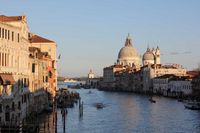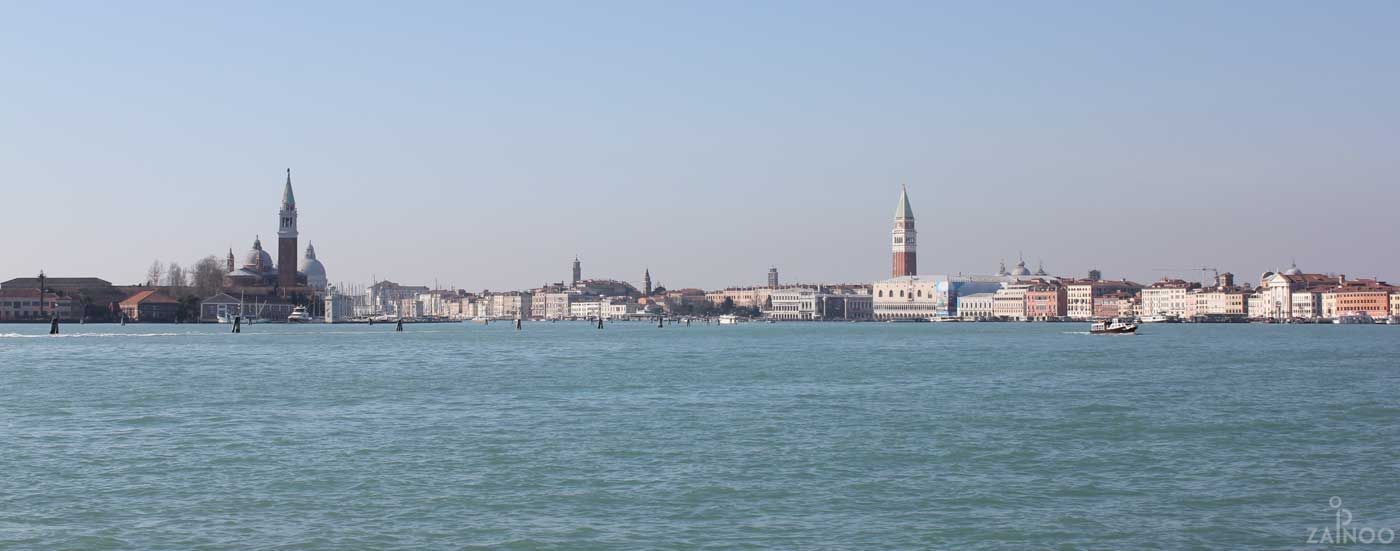Venice and the water
The lagoon and its importance for Venice
Venice – the city on the water. While it is a romantic highlight of tourists’ holidays, it usually means many hardships and high costs for the residents of Venice. Escaping from the constant flooding, the high costs and the masses of tourists, more and more Venetians move to Mestre on the mainland. The city has struggled with the water for centuries – more or less successfully. The environmental impacts of modern times make the survival of the beautiful city anything but easy.
The lagoon of Venice
Venice is the centre of the lagoon of Venice, which extends over a length of 40 kilometres around the city. Amazingly, only 11% of the lagoon is permanently covered with water – the rest are either islands or mainly mudflats and marshes (Laguna Morta). Fresh seawater from the Adriatic flows twice daily into the lagoon through three large passages (Bocca di Lido, Bocca di Malamocco and Bocca di Chioggia), thus providing a natural and vital water exchange. Moreover, they are the only drive-through locks that allow ships to pass into the lagoon. A separate water office which handles the cleaning of the channels, the right water depth and the protection of the lagoon, was established in 1501.
Venice: The City on the Water
Venice itself is built on over 100 individual islands. In order to provide a sufficient foundation, up to 25 metre-long oak trunks were driven side by side in the mud to the bottom. Surrounded by salty mud, the wood petrified and provided the perfect foundation for the development of the city. The canals were used as transport routes and sewers at the same time. The daily flood cleaned out the sewage. But Venice is still struggling with the muddy ground. The houses are not only exposed to constant movement, the foundation is sinking more and more into the lagoon bed. While the residents once kept the problem under control with multiple soil layers and mosaic floors, the situation is becoming increasingly worse.
Will Venice disappear?
Since its foundation, the city of Venice has sunk deeper and deeper into the muddy lagoon bed. Its inhabitants reacted to this by simply piling one floor on top of the other just to keep the level. Up to six floors per house can be found today. Unfortunately, the situation has deteriorated dramatically since the 1930s. In less than 30 years, Venice sank more than it did before during two centuries. Although the reasons are complex, however, there is one cause in common: human beings. First, the industry of Mestre and Marghera used the groundwater of the lagoon, leading to a rapid sinking of the city that could only be stopped in the 1970s. Since then, chlorine and nitrogen wastes as well as wastewater from the major cities have attacked the petrified oak trees and slowly dissolved them. In addition, global warming causes more and more flooding, which is a further burden for the city.
Conservation projects for Venice
Numerous projects for the protection of the lagoon have been running for years, and are more or less effective. The GENESIS (gigantic electronic control dams at the entrance to the lagoon) project will regulate flooding in the city in the future, while other conservation projects have tried to eliminate industry in the lagoon – with limited success so far. To make matters worse, the population of Venice is shrinking. Young people in particular, but also increasingly elderly Venetians, move to Mestre. There they can find not only jobs but also cheaper rents and, above all, big city life. Venice is increasingly left to the tourists and greedy traders. This brings money to the city, but whether it is ultimately beneficial to the preservation of Venice remains to be seen.



Tweet